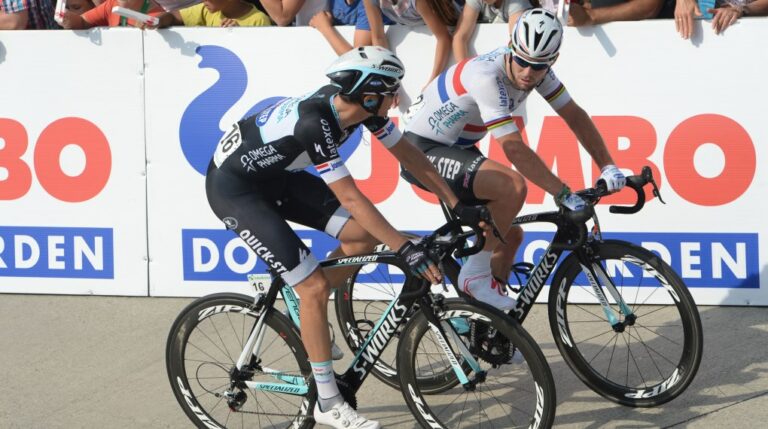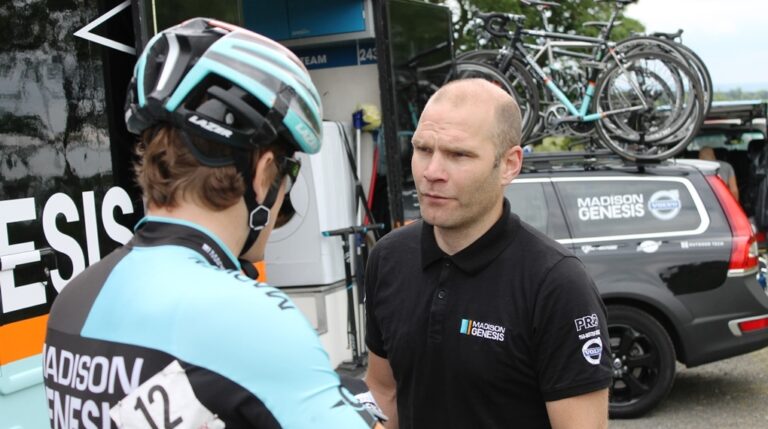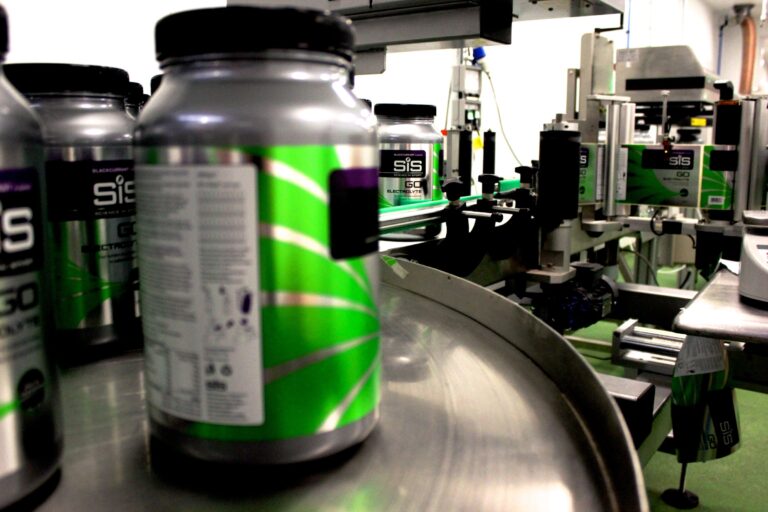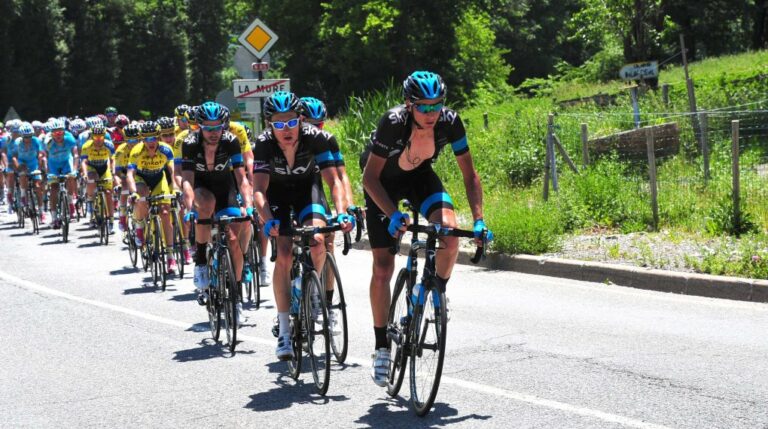Pinarello have joined forces with Jaguar to develop the machine to be ridden by Chris Froome in defence of his Tour de France title – the Dogma F8.
The Dogma F8 – or Faster 8, as it is the eighth incarnation of Pinarello’s flagship bike – replaces the Dogma 65.1 Think 2, ridden to Tour victory by both Froome and, in 2012, Bradley Wiggins.
Pinarello say the development of the Dogma F8 has been a three-way effort, with input also from Team Sky’s riders and Jaguar’s aerodynamics department. The headline figures: the Dogma F8 frameset is said to be 12 per cent stiffer, 16 per cent ‘more balanced’, 47 per cent more aerodynamic and 120g lighter for the frame and fork in a size 54cm than the Dogma 65.1. The complete bike, including rider, is claimed to be 6.4 per cent more aerodynamic than the Dogma 65.1.
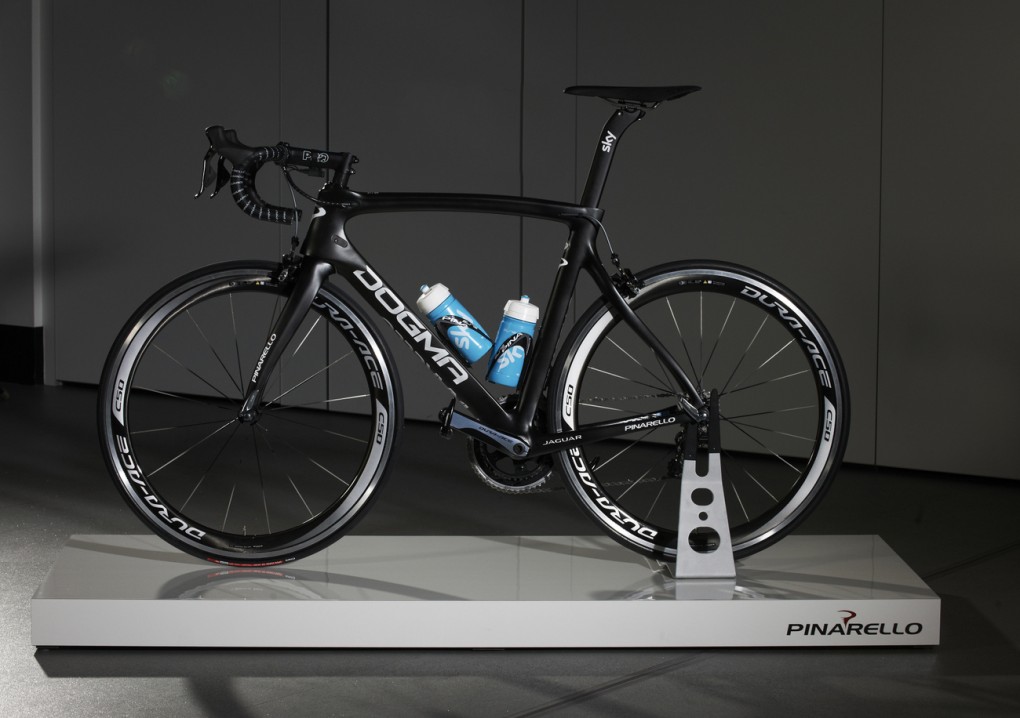
“We always look for new technology that improves our bikes’ performance,” said Fausto Pinarello. “It was a pleasure working with Jaguar on the aerodynamics. They bought a great deal of cutting-edge aerodynamic expertise which increases Team Sky’s chance of winning the Tour de France and means all Dogma F8 customers will get a superior bicycle.”
Jaguar’s engineers were required to work within fixed parameters, such as wheelbase and geometry, as defined by Pinarello, but were otherwise given a clean slate in order to improve the aerodynamic performance of the frame, and to reduce the drag created by components mounted to the frame.
More than 300 Computational Fluid Dynamics models were created between October and January, reportedly using the same methods as Jaguar Land Rover’s new road cars, before wind tunnel testing took place to verify the results.
And the results are? The Dogma F8 is a significant departure from the Dogma 65.1 and utilises airfoil tube profiles, dubbed FlatBack, while the frame also has a new aero seat post. The Dogma F8’s fork, which, like the seatstays, is markedly less wavy than that of the outgoing Dogma, has also been developed to minimise drag and, Pinarello say, ensure seamless airflow onto the downtube. The rear derailleur wire/cable exits the frame from the back of the dropout to reduce turbulence, while three holes on the seattube allow for a lower position for a second drink bottle to further reduce drag.
Jaguar are also said to have further developed the asymmetric design of the Dogma 65.1 to improve aerodynamic performance. The mono seatstay is claimed to guide airflow cleanly around the brake caliper, while using the minimal amount of carbon fibre to keep the weight low, and the frontal area of the frame has also been reduced to improve aerodynamics and save weight.
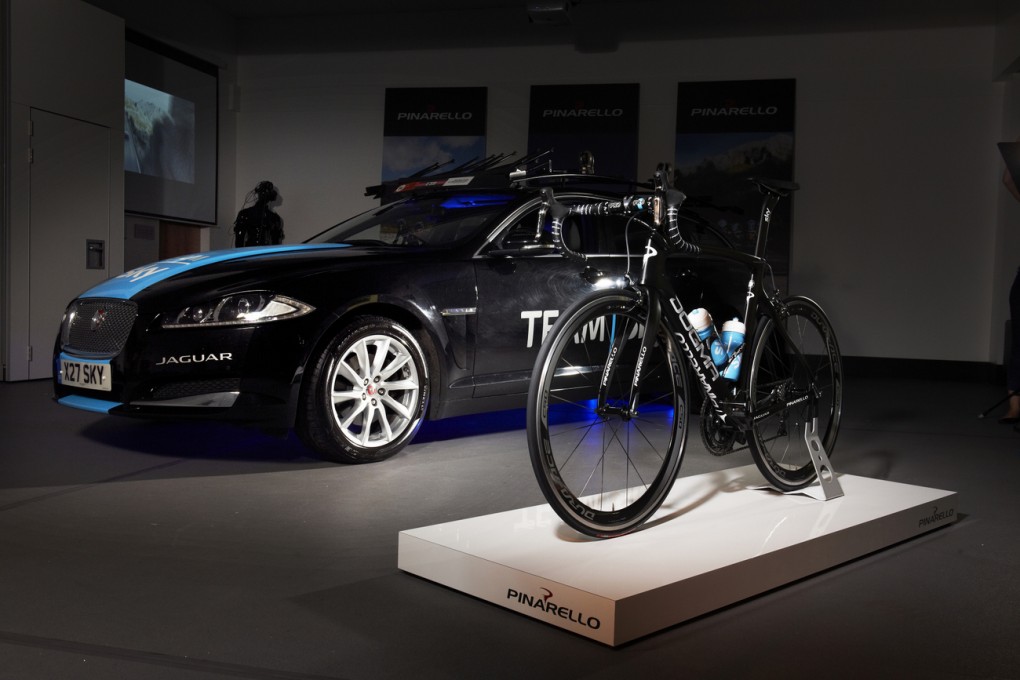
“Jaguar has very advanced CFD capability and we have a great deal of computational power, so we can turn around a lot of different configurations in high resolution very quickly,” said Jaguar Land Rover’s head of aerodynamics, Jon Darlington. “The skills needed are also fundamentally the same as for a car. We have a talented team with a great depth of aerodynamic knowledge. Applying this level of engineering capability and analysis to the development of a bike probably has not been done before.”
While aerodynamics played a key role in the development of the Dogma F8, Pinarello have also sought to reduce weight and improve stiffness, without impacting on the handling characteristics previously found on the Dogma 65.1, and have done so by using a higher grade of Torayca T11001K carbon fibre.
Darlington added: “Pinarello was very keen to protect their handling, as it’s fundamental to their bike design, and it’s one of the areas Team Sky love with the Dogma 65.1. So we kept the “hard points” of the frame design and then joined the dots with enhanced tube profiles – using aerodynamic principles and CFD to define the best overall design. We minimised the frontal area of the bike for aerodynamic gain, which also reduced the amount of material used. Combined with the advanced materials used by Pinarello, this resulted in a reduction in weight and an increase in stiffness.”
The Dogma F8 will be ridden by Team Sky for the remainder of the 2014 season, starting with the Criterium du Dauphine on June 8-15, where Froome, the defending champion, will fine-tune his preparations for the Tour de France, which starts in Leeds on July 5.
“The difference was obvious when I first rode the Dogma F8,” said Froome. “It is obviously lighter and feels more rigid, so that all the power from your legs is transferred to the road without any flex or movement. This is a bike on which I know I can win another Tour de France. I am going to be doing everything possible to make that happen.”
UK pricing and availability is to be confirmed.


